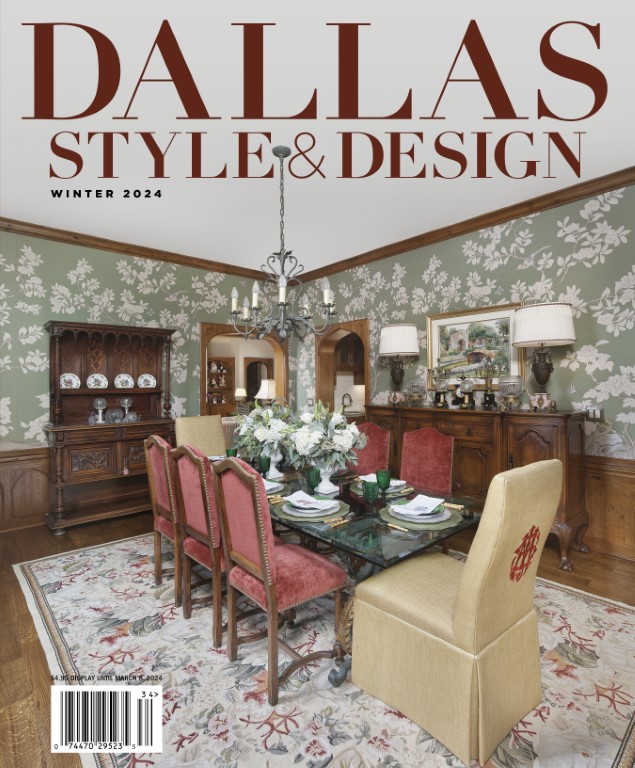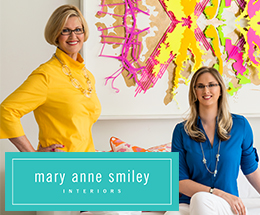Founded in 1962 with only 10 students by Sue Wade, a fashion model, buyer and merchandiser for Neiman Marcus, Wade College was originally called Miss Wade’s Fashion Merchandising College. The opening day course offerings included fashion merchandising and professional modeling. As the institution grew a move was necessary from the Turtle Creek location to its home at Dallas Market Center. In 1971 the curriculum shifted to full-time programs in merchandising and design. John Conte, executive vice president of Wade College, discusses the history and future of this valuable design resource in Dallas.
What is the mission statement of Wade College?
Wade College is a privately sponsored college that offers associate and baccalaureate degree programs in merchandising and design. The college is a teaching institution that emphasizes specialized professional study in fashion, interior and graphic design, and merchandising. The college is committed to serving the changing requirements of the merchandising and design fields and prepares its students for excellence in their career fields by recruiting knowledgeable faculty who are hired directly from industry and who own the responsibility to continually update curriculum and ensure that our facilities and equipment remain current.
What is the history of the school?
Wade College was granted accreditation by the Southern Association of Colleges and Schools Commission on Colleges in 1985. In the early 2000s, the college expanded to its current two-site campus within the Dallas Market Center and neighboring Infomart Building. The college currently offers accredited Associate and Bachelor of Arts degrees in merchandising and design, with concentrations in fashion design, interior design, graphic design/visual communications, and merchandise marketing/management. The college is also supported by the Council of Interior Design Accreditation.
What courses comprise the interior design curriculum?
The interior design curriculum covers a diverse framework of skill sets. Courses may focus directly on materials and systems or provide a studio environment in which students work through residential and commercial design challenges. Students also receive a solid business management foundation, providing them with associated skills related to the management of an interior design office within a global marketplace and building the necessary foundation for working in a real-world setting. Specific interior design courses at the associate level include: Introduction to Interior Design; Space Planning; Design, Drawing and Presentation; Interior Studio I and II; Interior Materials and Systems; AutoCAD; and Revit. At the bachelor’s level, our interior design courses include: Lighting Design; Construction & Detailing; Environmental Systems and Controls; Human Factors and Ergonomics; Color Theory in Interior Design; Interior Design Studios III, IV and V; and Interior Design Professional Practices.
In addition to the courses, how do you prepare students for the interior design industry?
A critical component of the Wade College experience is the creation of a portfolio of student and professional work for the Professional Portfolio Critique (PPC). For successful completion, this process not only requires students to critically examine their work but, perhaps more importantly, dictates that the students take a stance on interior design and their future place within the industry. Through the PPC process, graduating students present their work to a panel of leading industry professionals for critique and feedback.
How is Wade College involved with the local design community?
The best example of this is in our hiring practices. We continually staff our courses with working industry professionals who work in residential and commercial firms and desire to spend an evening, or two or three, a week with us! Currently, we have on staff Kurt Ortley, AIA, NCARB, LEED AP, an architect at Designkor; Joshua Metzger, M. Arch, RID, AIA, a designer at Gensler; and Josh Moore, NCARB, LEED, a design applications manager at Perkins+Will. Additionally, we have an advisory board made up of industry professionals, like Steve Waddill of Waddill Group, Lisa Robison of Dwell with Dignity, and Pamela Davidson, an alum and former senior store designer at JC Penney, among many others. These individuals review our curriculum and provide feedback for revisions to keep our instruction current. Yet another opportunity to stay connected to our industry is through our hosting of regular portfolio critiques where our students go to professional environments, like Sutherland Home, to present their completed portfolios for valuable feedback. Our Career Services department hosts a job fair at the start of each term and coordinates at least a dozen employers to visit with students on campus to recruit for internships and paid positions.
Do you have any success stories from past students?
An example of a graduate who really used her dual major in merchandising and design is Pamela Davidson, class of 2007. Currently, she is a senior designer at bkm Total Office of Texas where she directs the planning, designing and furnishing of commercial interior design projects. After graduation she was a senior store designer at JC Penney corporate where she was responsible for store renovations and installations. Today, Pamela sits on the college’s interior design advisory board where she provides feedback on curriculum and program outcomes.
What future plans do you have for the interior design course?
We are currently moving forward with plans for full CIDA accreditation. We were one of two schools nationally that received candidacy status in 2015, recognizing Wade College as being able to receive full accreditation within five years. What trends do you see taking place in interior design? The greatest trend I see is the growth of social responsibility within the profession and the integration of emerging technology to meet these needs. This responsibility may be demonstrated, for example, from the selection of environmentally conscious materials to a probono project for a homeless shelter. The inherent question within almost all professions today is how technology can be utilized not just to perform the task at hand, but how technology can, in fact, improve processes and outcomes.
How has design changed in recent years? And, how have you had to adjust the school’s teaching to keep up with the industry?
The biggest change that has impacted our program is a real desire to be licensed in the field. We transitioned our national kitchen and bath curriculum to the more holistic Council of Interior Design Accreditation standards. This forced us to really evaluate our programs at both the associate and bachelor’s levels and expand instruction well beyond the residential focus we once had. Addressing issues like human factors and ergonomics, environmental systems, cultural aspects of design like the design of kitchens for kosher households, as one example, has really pushed the rigor and global focus of our program.















